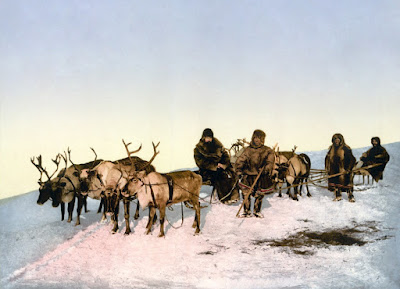The Midhurst
Mystery Bones
I was recently taken to an area of the Sussex downs, near the town of Midhurst, by my girlfriend to go on a geocaching trip and see all the places she used to play when she was younger. The area was heavily wooded, with a few grassland clearances and streams. The area was perfect for deer and although we were not fortunate enough to see one, we did see multiple deer tracks along the bank of the river we were following.
I was recently taken to an area of the Sussex downs, near the town of Midhurst, by my girlfriend to go on a geocaching trip and see all the places she used to play when she was younger. The area was heavily wooded, with a few grassland clearances and streams. The area was perfect for deer and although we were not fortunate enough to see one, we did see multiple deer tracks along the bank of the river we were following.
In one of the larger pools of the river I spotted a bone.
After fishing it out, I found that it was instantly recognisable as it was a
bone I have encountered a number of times and have developed a way of always
being able to recognise it!
Figure 1: The Bone in
the River Bed
The river then led to a large
ditch where I found two more bones, seemingly associated with each other, on
the edge of the bank. I immediately knew what elements these bones were from,
however to definitely attain a species identification I took them to compare
against Bournemouth Universities reference collection.
As mentioned, the first bone was instantly recognisable
as it has a very distinctive feature only found on one particular species. I
first encountered this bone whilst working at Fishbourne Roman Palace. A
visitor to the site was carrying a large cylindrical tube, within it was the
same bone as the one I found at Midhurst, however it was almost twice the size. The bone
was a Metacarpal from a Deer. The bone is instantly recognisable due to deep groves
along both the posterior and anterior shafts, which are only found on Deer
metapodials. Personally I always thought that these grooves always made the bones look
like sticks of celery, however the curator, Robert Symmons, said that his way
of remembering it is that they look more like ice skates!
The bone found in the river at Midhurst showed these two
grooves as well, showing that it was also from a deer. This specimen was a Metatarsal
rather than a Metacarpal as the distal end was shaped like a D rather than a
neat C shape. The final piece of analysis to do was to look at what species of
deer it was. To do this I compared the bone between the three species of Deer
you would expect to find in the area, and the closest match was Fallow Deer,
with the size falling in between the range of the Roe and Red Deer (See Figure
2).
Figure 2: Roe Deer
Metatarsal (Bottom), The Midhurst Metatarsal (Middle) and a Red Deer Metatarsal (Top)
The
final two bones that were discovered was a distal tibia and a calcaneus. To
discover what species these were from I worked on the assumption they were from
the same animal. The calcaneus was like no calcaneus I had seen before, with
both ends being concave, rather than one end concave and one convex. Because of
this I knew that this was not going to be a species I was very familiar with,
so I could rule out medium sized mammals such as dog and sheep.
The
only species that I could think of being present in the area of this size was
badger. When these were matched up, I found that the calcaneus of a badger had
a concave end, and the distal tibia fitted as well showing it also badger and was probably from
the same animal.
Figure 3: The Midhurst Calcaneus (Bottom) compared to a Badger Calcaneus (Top).
Figure 4: The Midhurst Tibia (Bottom) compared to a Badger Tibia (Top).
My
exploring of the woods around Midhurst led me to learn more about a species
that I did not know much about before, with a couple of badger bones being
found. Like the deer metapodials which I also found on this walk, the
uniqueness of the calcaneus of badger led me to its identification, and now
whenever I found a concave calcaneus, I will know to check against badger
first!





